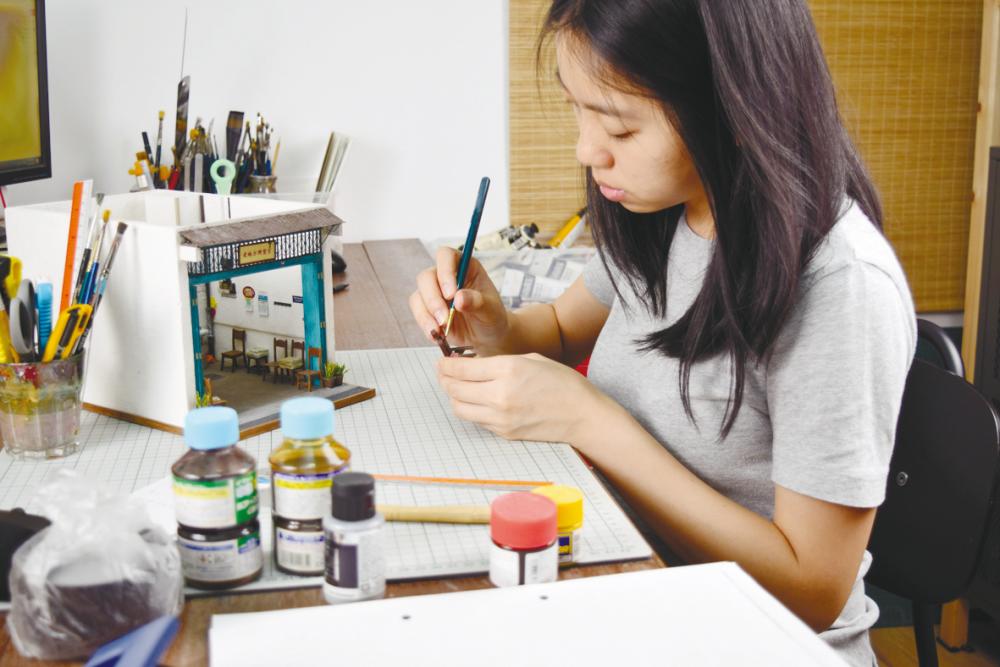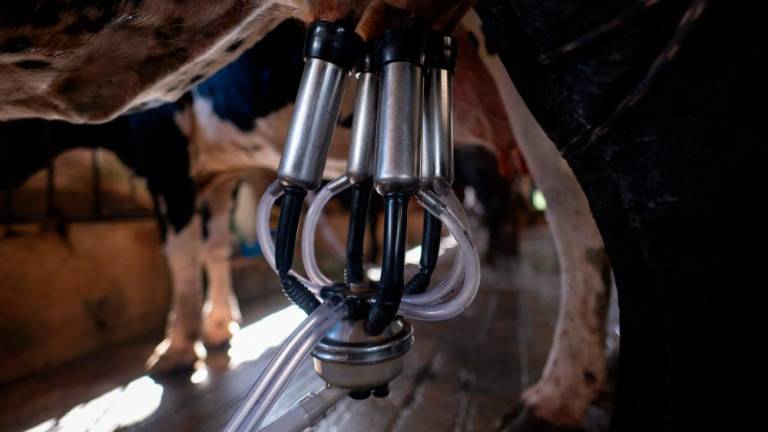THERE is something magical about minatures. For many miniaturists, creating and painting these tiny objects is a time-consuming labour of love, and Malaysia has a number of artists who have made a name for themselves with their technical skill and attention to detail.
One of these artists is Picoworm, the moniker of Lim Pui Wan, 28. The Kuala Lumpur native has been dreaming of being a miniature artist since she was a teenager. After she graduated from university, she was able to pursue her passion full-time, and continued even after moving to Johor Baru to be with her husband.
In an email interview with theSun, she talked about her projects and inspiration, and teased that she is working on some dioramas for a National Day and Malaysia Day project.
What first got you interested in miniatures?
“My sister is a collector of miniatures. When I was 14, she bought a tutorial book about miniatures, and this was when I first started and became obsessed with making miniatures. I couldn’t afford to purchase miniatures, so I learned to make them myself instead.”
How did you begin to develop your skills?
“I learned it through blogs, forums and some books. However, practical learning is better than purely understanding how it works. So, I bought some fundamental materials and tools to begin sculpting miniature food items.
“I practised whenever I had spare time when I was studying. I also love exploring different kinds of materials and that’s why I eventually began to make dioramas.”
What inspires you to choose a setting or item?
“I love to discover interesting stories to recreate a certain scenario or diorama. Most of them are inspired from our daily life. I love to observe things around me.
“I loved to observe and explore around Kuala Lumpur city when I was studying at university, since I was taking the bus to classes. By doing so, it helped me to capture a lot of interesting ideas which have inspired me to work on my artworks.”
What tools do you use?
“Some of the main tools include a tweezer, paint brush, sculpting tools and hobby knife, while the materials vary. For example, miniature food items are mostly made from clay, and building dioramas require the use of a wide range of materials like wood, plastic and metal.”
What indicates the level of skill in a miniature?
“There is no singular thing to look for. But for me, I love to bring realism to my miniature works that is as close to the real world as possible. This is also a fun thing to play around with, by creating an illusion between real and miniature work.
“I also focus on details that people may miss, like dust, dirt or stains. These are also key to bringing life to my artworks.”
What would be a typical day at work in the studio?
“It depends on how big and complex the work is. Normally, it takes one to three months, including the initial discussion, planning and production stage.
“On a typical day right now (during the pandemic), I wake up at 7am or 8am. I start my day with a simple breakfast and some yoga or a workout. Then, I would start work immediately, until lunch break. After that, I continue working until dinner time.
“Only during certain periods when I need to rush for a project, I would work until 10pm or 11pm. Being a one-man company, I need to be self-disciplined and set the routine like this to balance my work and life, which makes me very happy and excited to work every day.”
Has your creativity been affected by the lockdown?
“Since my work takes place in a studio, it doesn’t affect me much, except I cannot go to other states for a vacation to get some inspiration. I do that with Google Street View instead.
“However, during the first movement control order, I was depressed because I was isolated in the house, which also demotivated me from working on anything. Then, I decided to do something totally different from what I was used to make. I made the apartment from the comic Detective Conan, which has been my favorite anime since I was a kid.
“This work is not finished but the effort has brought so much joy and made me realise again why I love miniatures so much.”
Do you have any advice for people considering this as a hobby?
“Just start to play with any materials you have right now. Honestly, you don’t need any fancy and decent tools to make a miniature. Even cardboard or scrap paper can be good and handy materials.
“Of course, you will need a little bit of patience to stay in one place until it is complete. But trust me, using your hand to craft something out of scraps is really enjoyable and satisfying.”














